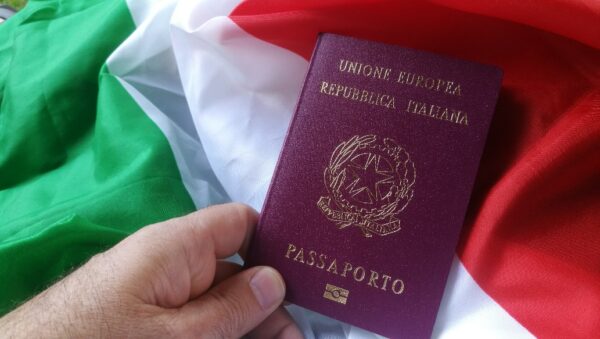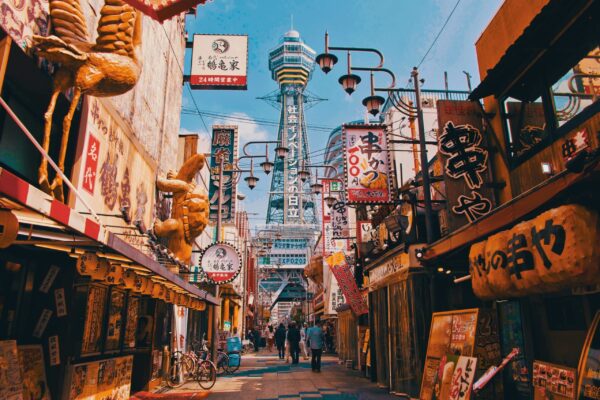Italy immigration continues to attract people from around the world, drawn by the country's rich culture, beautiful landscapes, and promising opportunities. Whether you're planning to study, work, join family, or retire in Italy, it's very important to be familiar with the immigration process. From securing the right visa to meeting residency requirements, the little details can make or break your transition.
Italy offers several visa options for foreigners, but navigating the system can be challenging without the right guidance. Here, we'll help you get a better idea of what to expect and how to prepare for your journey. If you've been dreaming of life in Italy, here's all you need to know to make your relocation successful.
Italy Entry Requirements
If you are from one of the countries that have a Schengen agreement with Italy (such as the United States, Australia, Japan, the United Kingdom, Canada, etc.), you can enter the country for 90 days without a visa. However, you must apply for a resident permit after you arrive in Italy.
Citizens from EU countries don't need to apply for a visa if they are from an EU nation, but they must register their new address once they have moved there. Other foreign nationals (I.e, non-EU citizens) must have a residence permit and a visa. The immigration policy requires that they start the procedure at an Italian consulate or embassy back home.
Different Ways to Immigrate to Italy

You must have a good reason for wishing to relocate to Italy to get the right residency permit and remain there for an extended period of time. This could be any of the following:
1. Moving to Italy for Employment
Italy immigration is quite popular for work purposes. You must obtain a valid work visa to relocate to Italy for employment; depending on the nature of your job, this might be any of the following:
General employment visa: To obtain the general work visa, you must be sponsored by an Italian employer and apply for the visa when the Flow Decree “Decreto Flussi” is open. The government sets an annual cap on the number of non-EU workers eligible for a work visa. Asylum seekers are also eligible to apply for this visa.
Freelancer/self-employed visa: The Italian term for the freelancer visa is Lavoro Autonomo, which means “visa for self-employed individuals. It is among the types of visas for Italian immigrants. This visa is available to self-employed people, business owners, and representatives of various independent professions, including engineers, doctors, journalists, lawyers, architects, influencers, designers, programmers, coaches, and others. The self-employment visa is quota-based, so only a limited number of visas are awarded yearly.
Italy EU Blue Card: If you are a highly skilled worker in your country, you are eligible for a European Blue Card. This work visa enables highly talented non-EU nationals to reside and work in any European nation except Ireland, Denmark, and the United Kingdom. A highly competent worker can be:
- A manager of highly skilled employees in small and medium-sized firms (SMEs) or large corporations.
- A manager of highly skilled employees working on business initiatives of public benefit
- A graduate or postgraduate student at top business schools and institutions.
Youth mobility visa: This visa, previously known as a “Working Holiday Visa,” is granted to applicants from Australia, New Zealand, Canada, and South Korea who are between the ages of 18 and 35.
2. Moving to Italy to Study
A student visa is another highly common way of immigrating to Italy. Foreign nationals who are not members of the European Union can enroll in Italian universities and apply for residency in Italy while obtaining a top-notch European education at a renowned Italian university. Here are the eligible applicants:
- Students who are enrolled at domestic universities but can study abroad (if their current university has agreements with any Italian university).
- Foreign citizens receiving vocational training in Italy
- Students accepted into full-time programs at Italian universities.
- Students enrolled in independent courses in the Italian language or culture.
3. Moving to Italy to Join Family Members
You can immigrate to Italy to join your family through a family visa. Foreigners from EU and non-EU countries can apply for a family reunification visa to Italy if a family member is an Italian citizen or holds a residency permit in Italy. Here is a list of eligible applicants:
- Spouse
- Minor children
- Long-term partner
- Adult children who are financially dependent
- Financially dependent parents
- Parents over the age of 65
4. Moving to Italy for Retirement
If you wish to retire in Italy, you may apply for an elective visa, commonly known as a retirement visa. If you want to retire in Italy, you may apply for an optional visa, widely known as a retirement visa. Although the Italian immigration authorities do not define a minimum sum, many internet sources state that individuals or couples must have at least €32,000 or €38,000, respectively. You can use your lifelong savings, evidence of some form of passive income, or proof of pension as your means of subsistence.
5. Moving to Italy as a Digital Nomad
Italy has introduced a visa for digital nomads that permits them to enter the country for a year and then stay longer. To be eligible for a digital nomad visa, you must be a self-employed individual who can operate remotely, work for a firm from a remote place, or be an independent worker.
6. Moving to Italy as an Investor
The investment visa, also called the Golden Visa, was launched in January 2017. It's one of the easiest routes to Italy immigration. Foreigners who want to make major investments in Italy can apply for this visa. The first residency permit is provided for two years via an expedited procedure. Under certain conditions, the residency permit might be renewed for another three years. After five years of living in the country, you can apply for permanent residency. If approved, you will become an Italian permanent resident!
Documents Required for Visa Application
While preparing for Italy immigration, here are the documents you need to apply for an Italian National visa:
- National D visa application form
- A valid passport
- Passport photographs
- Cover letter
- Visa fees
- Proof of accommodation
- Proof of travel
- Proof of financial resources
- Civil status documents
- Employment contract
- Proof of medical care
- Proof of admission into an Italian school
- Additional documents based on the purpose for travel
How to Apply
To obtain a visa to relocate to Italy, follow these steps:
Find an embassy/consulate: Find the closest embassy or consulate that takes visa applications in your home country or country of origin. You can look for a consulate/embassy here.
1. Fill out the application form: The form is usually available on the websites of the Italian consulate or embassy. Download it, fill it out, and remember to sign it.
2. Make an appointment: You need to schedule a time for your visa application at least one month in advance.
3. Prepare your documents: Prepare the necessary paperwork for the application, including your passport, cover letter, bank statements, employment verification, and so on.
4. Submit your application: On the day of your scheduled visa appointment, fill out your application, pay the required amount, and then attend a brief interview to discuss your motives.
5. Get your visa: After your application has been approved, you will be granted a national D visa to enter the country. You must visit your local immigration office and apply for your residency permit.
6. Settling in Italy: As soon as you arrive in Italy, there are a few things you should do to settle in fully. The most crucial steps are getting your legal residence permit and locating a permanent residence. After you arrive in Italy, you must apply for your residency permit (Permesso di Soggiorno) within eight days.
Visa Fees and Processing Time
It costs €116 ($140) for non-EU immigrants to apply for a national D visa to Italy. Any service fees or other costs you spend on your residency permit after entering the country are not included. An Italian visa typically takes 15 working days to process, especially for business or tourist visas.
Nevertheless, this may differ based on the particular consulate, the kind of visa, and other factors like the season (for example, delays may occur during busy times). Processing times can be much longer for certain long-term visas, ranging from 90 to 120 working days. It is generally advised to apply well before the date you intend to travel, particularly if you are applying from a non-European country.
Italian Citizenship
After residing in Italy for ten years, you can become a citizen. But this duration is reduced to five or even three years for people of Italian descent or who marry Italians. If you are an unmarried applicant without children, you must also demonstrate that you earn at least €8.263 annually. For married applicants, the sum is raised to €11,362, plus €516 for each dependent. To make your citizenship application process less stressful and quicker, you might want to seek advice from experts in the field.
Conclusion
Italy immigration offers exciting possibilities, but it requires careful planning and understanding of the legal steps involved. Knowing your options and following the correct procedures can help you start a successful new chapter in Italy. With the right preparation, your move can be both rewarding and stress-free. Start your journey today.















